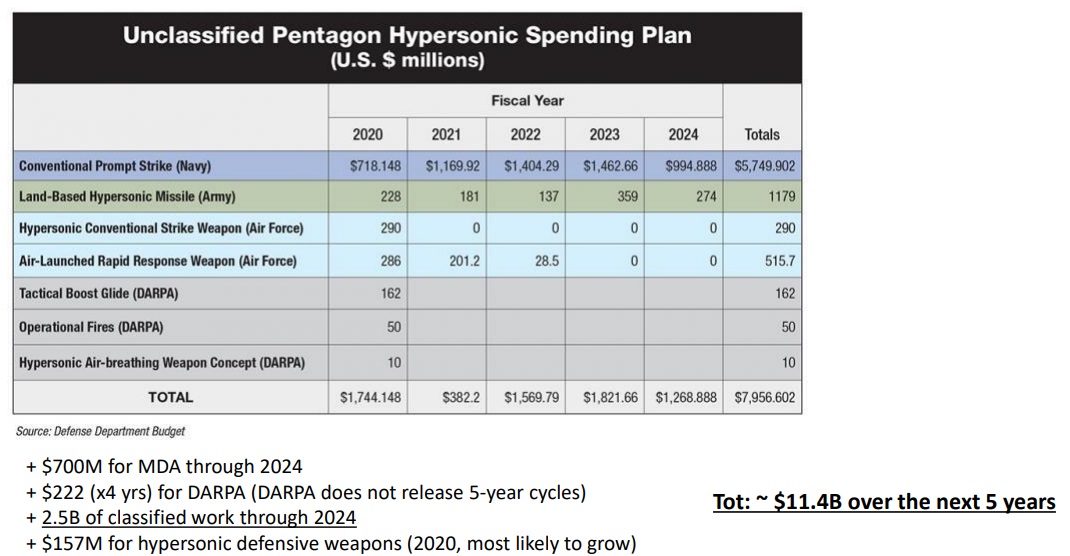While the pandemic provided a funding boost to research supercomputing and life sciences HPC, the next wave of investments in HPC systems and simulation software might come from the rapidly evolving hypersonics space.
We’ve had supersonic aircraft for decades but hypersonic—moving above Mach 5—is expected to explode into civil and military use over the next five years with billions of dollars allocated to both classified and commercial in that span.
Between now and 2027, the Institute for Defense and Government projects an estimated global total of $127.3 billion will be spent on hypersonic weaponry alone and Defense Department budget numbers in the U.S. expect $2.5 billion in classified hypersonic work through just 2024. Boeing is developing its own hypersonic transportation technology and startups like Hermeus are pitching a Mach 5 jet that make the New York to Paris jump in 90 minutes.
Supercomputing has been deployed over the last several decades to simulate every aspect of supersonic flight but hypersonics could kick the modeling capabilities needed up quite a notch. According to Valerio Viti, who leads aerospace and defense industry efforts at HPC simulation software company, Ansys, the multi-physics modeling requirements will be pushed to the next level, requiring far more out of scalable software and systems than we’ve seen in both research and commercial HPC spheres.
“The design requires extensive understanding of all the physics involved and their interaction. This can include everything from aerothermodynamics, structural analysis, electromagnetics, sensors, guidance and control systems, and so on,” Viti explains.
While modeling and simulation have been at the core of supersonic testing, there has also been ground and flight testing to complement simulations. With the hypersonic age, however, ground testing will need ultra-specialized facilities that have limited scale that will be very expensive to develop and run. Flight testing is the most expensive with test cycles lasting five years or longer. The only way to make it start working faster is with far more advanced multi-physics simulation.
Simulation for hypersonics goes far beyond just adjusting to the increased thermal, materials, flow, and other physics challenges. Full simulation platforms, systems and software, will also need to model comprehensive hypersonic systems, which means connecting dramatically different codes and tooling to standard modeling and simulation.
As Viti points out from an Ansys perspective, this is everything from the control systems (simulating flight controls using different behaviors/environments), different navigation and guidance systems, and doing all of this in fully virtual simulations of the entire host of componentry via realistic 3D physical models for wargaming, for instance.
Ansys’s own hypersonic modeling and simulation package highlights the complex, interconnected, multi-physics/multi-system nature of the hypersonics simulation problem that lies ahead. With great simulation complexity comes the need for even large investments in HPC infrastructure. Much of the multi-physics modeling still uses traditional HPC tools and software (AI has not infiltrated here yet and from all accounts that’s some time off) and the computational resources to simulate an entire aircraft with specific, new requirements in thermals, power, interconnected systems, and so on will be great.


